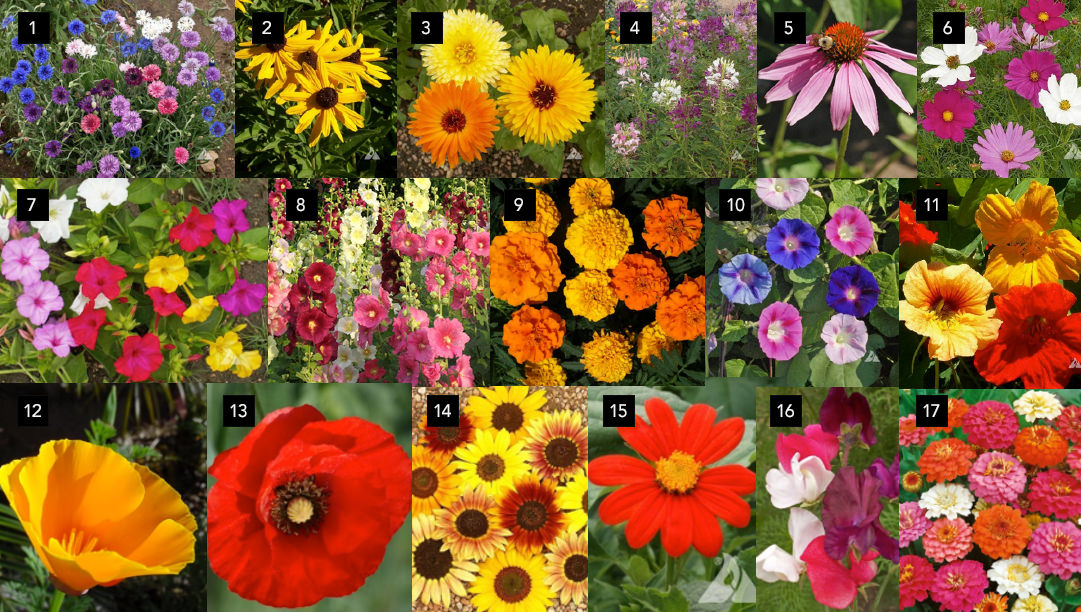
Direct Seeded Flowers
Some flowers just do better when their seeds are planted in the garden. It may be that they develop a root system that doesn’t transplant well or that they need the soil to be a certain temperature to germinate. There are also flowers that people like to plant a lot of and it’s much cheaper to plant seed than purchase flats of young plants. And some seeds are so easy to grow, it seems silly to buy plants. Here’s a list of flowers that are not only easy to start from seed, but often do better if they are planted where they are to grow. They are marked as VE (very easy) and ME (moderately easy), SR (special requirements).
- Bachelor Buttons (VE)
- Black-eyed Susan (SR) – best if stratified, great for very early spring seeding for current year or late winter seeding for next year
- Calendula (VE)
- Cleome (VE)
- Coneflowers (SR) – best if stratified, great for very early spring seeding for current year or late winter seeding for next year
- Cosmos (VE)
- Four O’Clocks (VE)
- Hollyhock (ME) – don’t like to be transplanted
- Marigold (VE) commonly planted directly in the garden
- Moring Glory & Moonflower (ME) – needs warm soil
- Nasturtium (VE)
- Poppy (SR) – best if stratified, great for very early spring seeding for current year or late winter seeding for next year
- Sunflowers (VE) commonly planted directly in the garden
- Sweet Peas (ME) don’t like to be transplanted
- Tithonia (ME) needs warm soil to germinate
- Zinnia (VE) commonly planted directly in the garden
Reading the information provided on the packet will help with special conditions that any specific variety might need.
Many perennial flowers can be started in the garden late in the season (August/September) for blooms the following year.
Many wildflowers can be scattered in the late fall (after a killing frost) to germinate the following spring.
